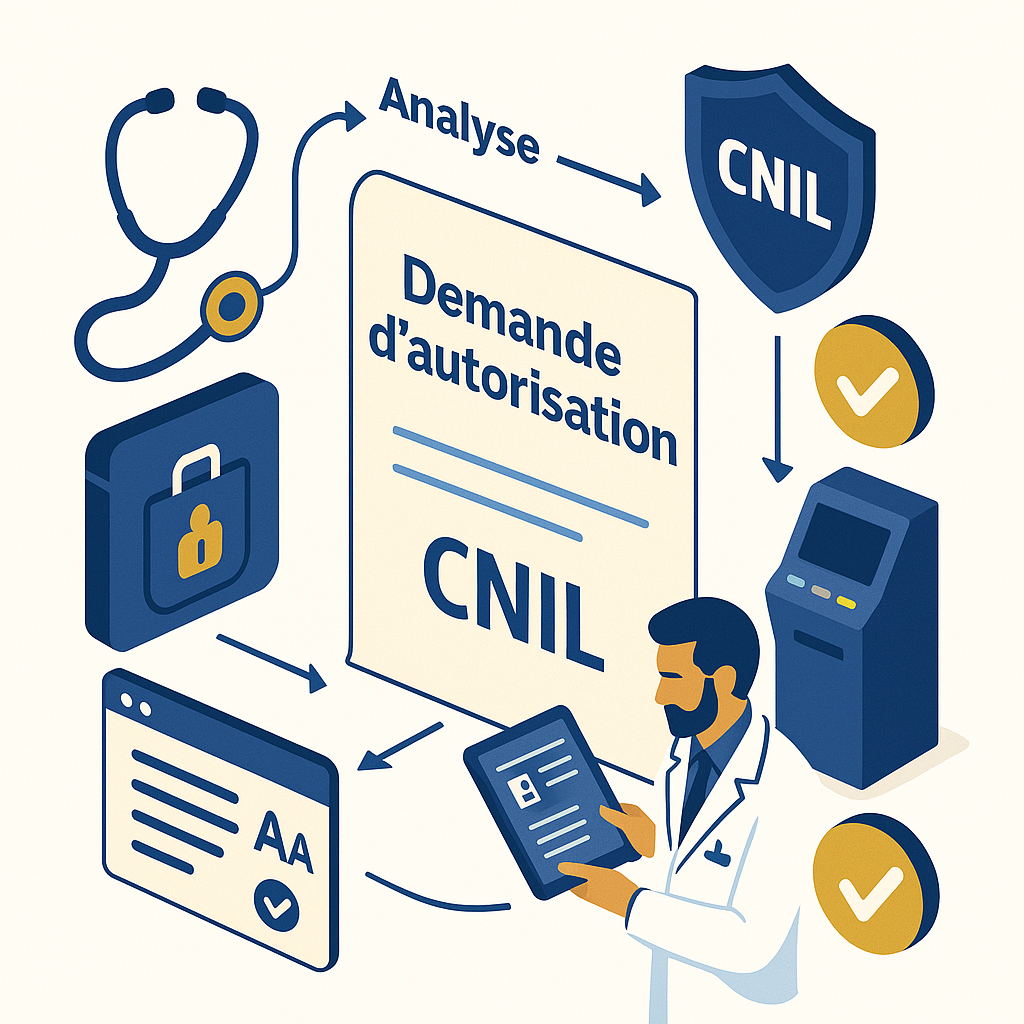The issue of billing in healthcare establishments is of crucial importance in our healthcare system, having a direct impact on the financial situation of patients faced with often costly care.
A recent investigation by the DGCCRF revealed that nearly 75% of clinics audited had billing anomalies, highlighting worrying practices that need to be closely scrutinized. This context raises questions about healthcare regulations and the way in which patient information is transmitted, making a thorough examination of the obligations incumbent on establishments essential.
By scrutinizing the health measures implemented by the DGCCRF, we will take into account the results of controls and the consequences of faulty practices on consumer safety. Who are the real winners and losers in this situation? Let's find out together what's at stake behind these figures.
If you need a consumer law attorney, contact me!
What are the main anomalies identified by the DGCCRF in healthcare establishments?
Billing in healthcare establishments is a subject of considerable concern, particularly with regard to billing anomalies identified by the DGCCRF. These anomalies, which mainly affect medical and non-medical services, call into question the transparency of information provided to patients. In 2023 and 2024, the DGCCRF conducted a survey of 123 healthcare establishments, revealing that almost 75% had at least one irregularity in their billing practices.
Here are some of the most frequently observed anomalies:
- Misleading commercial practices: establishments informed patients that certain services were compulsory, when in fact they were optional.
- Invoicing of "comfort packages": Patients who had opted for free group accommodation were invoiced for single rooms without their informed consent.
- Non-compliance with information requirements: Shortcomings were noted with regard to the display of prices and the provision of information on patients' rights, in particular their right to a consumer ombudsman.
These anomalies underline the flaws in the information system for patients, who are sometimes poorly informed of the charges to which they may be exposed. Lack of clarity on medical and non-medical services can lead to a reduction in patient confidence and purchasing power, prompting the DGCCRF to step up its checks to protect consumers.
The results of this survey demonstrate the urgent need to bring healthcare establishments into line with regulatory requirements. The next steps are to examine how the DGCCRF ensures consumer protection in the face of billing irregularities.
How does the DGCCRF protect consumers from billing irregularities?
As a regulatory authority, the DGCCRF plays an essential role in monitoring billing practices in healthcare establishments. Its main objective is to guarantee consumer safety by ensuring that patient information is not only clear, but also complies with legal requirements. To achieve this objective, several approaches and tools are implemented.
First of all, the DGCCRF carries out regular checks on healthcare establishments. These inspections enable the early detection of anomalies in medical services and billing conditions. During these inspections, dedicated teams verify not only the conformity of posted tariffs, but also compliance with patient information obligations.
The DGCCRF's main actions include :
- Compliance audits: Analysis of documents and billing proofs to ensure transparent practices.
- Investigation of complaints: Receipt and processing of complaints from patients concerning observed anomalies.
- Information campaigns: raising patients' awareness of their rights and the steps to take in the event of a dispute.
In addition, the DGCCRF works with other healthcare bodies to improve healthcare regulations and encourage establishments to comply with current standards. For example, the French law on the modernization of the healthcare system requires establishments to provide transparent and accessible information to patients. This includes updating pricing tables and displaying insured persons' rights.
The results of these efforts are measured by statistics that show a reduction in anomalies in healthcare procedures over time. However, challenges remain, particularly with regard to raising patients' awareness of the means of contestation and the importance of their role in the care quality control process.
With this in mind, we'll be looking at the consequences of billing non-compliance, and the repercussions this can have on healthcare establishments and patients themselves.
What are the consequences of billing non-compliance in healthcare facilities?
Non-compliance in healthcare facility billing has significant consequences for both facilities and patients. When irregular billing practices are brought to light, this can affect not only the reputation of facilities, but also patient confidence - a crucial element in the healthcare sector.
One of the immediate consequences of anomalies is the risk of administrative sanctions. Following the 2023 and 2024 investigations, the DGCCRF issued numerous warnings and injunctions to cease practices, while administrative fines were imposed for display defects and billing conditions that did not comply with the Public Health Code. These fines, amounting to over €160,000, are a heavy burden for establishments, especially when one considers the already high costs of healthcare.
Short-term impacts include :
- Reduced confidence: Patients may become reluctant to seek care in facilities that have been singled out for billing anomalies, which may affect their attendance.
- Impact on finances: In addition to fines, additional costs may arise to rectify identified non-compliances, leading to increased expenses for establishments.
- Legal risk: Facilities may also face legal recourse from disgruntled patients, resulting in additional legal and litigation costs.
In the long term, these non-compliances can lead to a forced evolution of practices within healthcare establishments. DGCCRF announcements, such as consumer mediation, aim to strengthen consumer protection mechanisms and encourage establishments to modify their practices in order to comply with regulations. This also reflects the need for ongoing education on patients' rights and the obligations of establishments.
Despite the improvements already observed - with a large number of facilities having had to comply after interventions - vigilance remains the order of the day. Patients are therefore urged to be proactive when requesting information, and to exercise discernment when receiving invoices.
In this context, reflecting on the implications of billing anomalies underlines the importance of clear, accessible information for patients. It also raises the question of the commitment of facilities to comply with standards, and the impact on the integrity of the healthcare system as a whole.
For more information, please consult the DGCCRF article: https://www.economie.gouv.fr/dgccrf/laction-de-la-dgccrf/les-enquetes/facturation-en-etablissement-de-sante-3-cliniques-sur-4-en.




